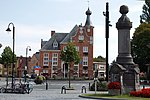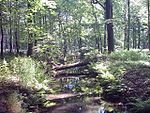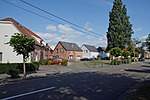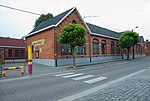Graspop Metal Meeting
Heavy metal festivals in BelgiumMusic festivals established in 1996Summer events in Belgium

Graspop Metal Meeting is a Belgian heavy metal festival held in Dessel each year since 1996, excluding 2020 and 2021 due to covid restrictions. Despite the small size of the festival grounds (upholding a perimeter of only ~4 km) the festival draws a large number of spectators from around Europe, with a total of 220,000 visitors in 2022, up from 200,000 visitors over the course of the 2019 edition, and 152,000 in 2015.
Excerpt from the Wikipedia article Graspop Metal Meeting (License: CC BY-SA 3.0, Authors, Images).Graspop Metal Meeting
Kastelsedijk,
Geographical coordinates (GPS) Address Nearby Places Show on map
Geographical coordinates (GPS)
| Latitude | Longitude |
|---|---|
| N 51.230041666667 ° | E 5.0839888888889 ° |
Address
Natuurlijke speeltuin
Kastelsedijk
2480
Antwerp, Belgium
Open on Google Maps










